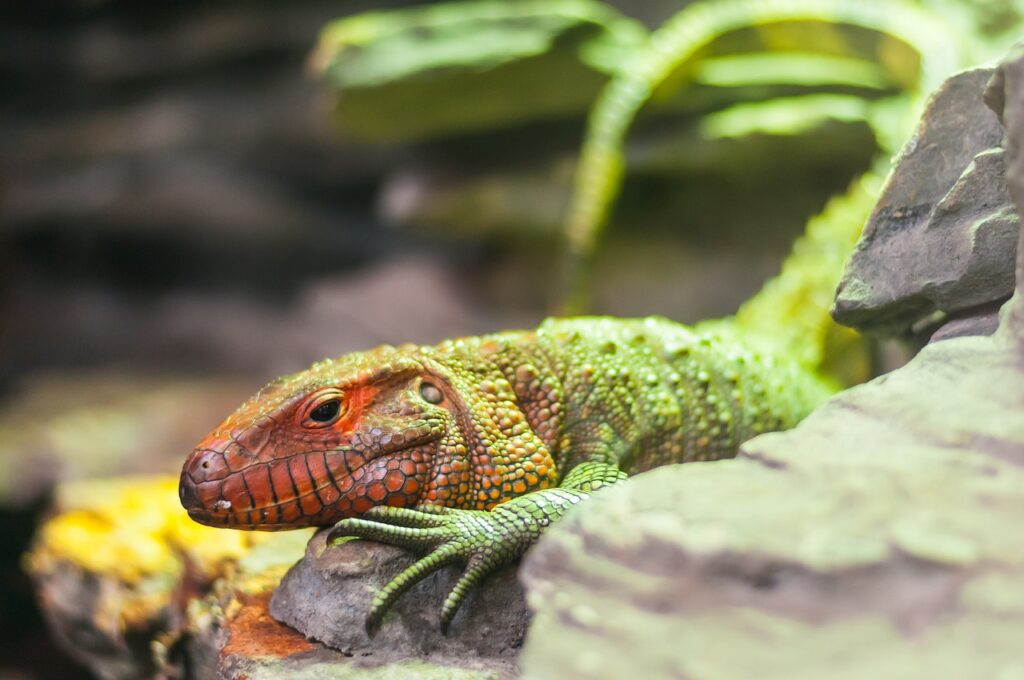No matter what species they are, geckos of all types require additional heat in their habitats. So, how can I keep my 3-month-old leopard gecko warm? You should know that at one end of the tank, a heating mat or an over-the-tank heat lamp or bulb might be used to give heat. When you go to a pet store, the staff will try to convince you that their heat lamps are the best, but they aren’t. In simple terms, they are the most expensive ones.
Heat sources like heat lamps and hot rocks should be avoided because they could get very hot and are seriously harmful to your leopard gecko. Reptiles frequently do not move off them before they become burned. Still, you are worried about how to keep your three-month-old leopard gecko warm. Continue reading to determine what is best for your leopard gecko.
What is Best for Keeping Your Leopard Gecko Warm?
Leopard geckos don’t bask, contrary to other reptiles such as bearded dragons. Reptile heat mats work best because they absorb heat from their stomachs. Additionally, a temperature controller is required. Maintain the heat mat between 80 ℉ and 90 ℉. Theoretically, heat rocks might be effective. They allow your reptile to absorb heat from its stomach. But tragically, heat rocks are quite unreliable, frequently burn your lizard, and provide a significant fire risk. The danger is not worthwhile.
As a result, ensure your tank is slightly raised (at least fifteen gallons) to allow warm air to escape. Heat pads almost always come with rubber stickers that serve this purpose.
Ensure your leopard gecko has a hide or a little shelter on the heat mat to keep him secure. If not, he or she would not come to the mat to heat up. One-third to fifty percent of the tank must be covered by the heat mat. Additionally, keep in mind how the temperature varies seasonally because you might need to adjust the heat in the winter.
What happens if there is a storm in the winter and the electricity goes out? In case of an emergency, you may always have hand warmers. Shake them up, then take your leopard gecko. Most likely, he or she will curl up in the warmth.
Normal Temperature Conditions for a Baby Leopard Gecko:
The following list of recommended temperature ranges for leopard geckos:
- The warm side of the tank: 80–85 °F
- The cold side of the tank – more than 70 °F
- The general air temperature of four to six inches over the ground on the cold side must be 73 °F to 76 °F
- Relative humidity of 30% to 40% is optimal.
Temperature Monitoring:
A “point and shoot” temperature gun, which is readily found in most pet stores, or conventional temperature strips or thermometers that adhere to the internal walls of the enclosure should be used to check the temperature of the tank every day. Depending on the temperature of the place where the reptile is kept, the amount of heat given might need to be adjusted seasonally.

Tips – How Can I Keep My 3-Month-Old Leopard Gecko Warm?
Here are some tips on how you could keep your baby leopard gecko warm:
- Use your regular space heaters, home heating system (don’t use unsupervised), etc. to raise the temperature in your room.
- Utilize hot water bottles (wrapped in a towel to prevent thermal burns)
- Place the enclosure in a room with many windows so that natural light could come in. You could try to place a part of the enclosure in direct sunlight, but be careful because there is a risk that it could overheat.
- He may get into contact with you when you’re at home due to your body heat.
- Place hand warmers or heat packs from a sports goods store under the tank.
- Contact your local SPCA to see if they have any inexpensive lights they can sell or lend to you, or contact a local reptile organization until you get a new heat source. But it is not a recommended approach because of the risk of burning.
- Check with your friends and family to see whether they could lend you money to get a heat mat.
- At 3 months, babies shouldn’t be placed on the substrate because they’re easily impacted by swallowing sand/dirt; instead, use paper towels or a repti-carpet.
It’s crucial to avoid feeding your lizard during this period because they require heat to digest their food.
Conclusion:
In conclusion, the baby leopard gecko needs a heat source to stay warm. The ideal heating for leopard geckos is a heating pad on one side of the enclosure. Under the cage, a reptile heating mat keeps the tank at a warmer temperature. Leopard geckos require belly heat to aid with digestion, and an under-tank heater gives them the warmth they require. The complete answer to the query “how to keep your three-month-old leopard gecko warm?” is provided here and you will gain from reading this guide.
FAQs – How Can I Keep My 3-Month-Old Leopard Gecko Warm?
The ideal temperature range is between 77 °F and 90 °F (25 to 32 °C). Avoid using heat rocks since they could get too hot and burn the baby gecko. The relative humidity should be between 30% and 40%.
Leopard geckos might be able to withstand the absence of heat for at least a month. If temperatures are held within the standard range of 60 °F, they can survive on their tail fat reserves.
If the heat is affecting your Leopard Gecko, he will go to cooler, shaded regions of your enclosure and avoid the hotter areas. To get some relaxation, geckos frequently travel to the edges of the cage. Look for indicators of accelerated growth, excessive anxious running, and food preoccupation.








